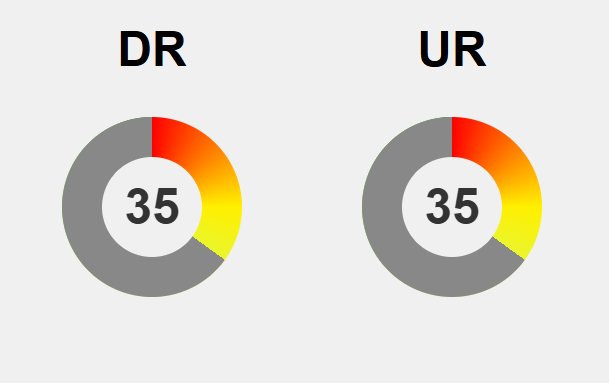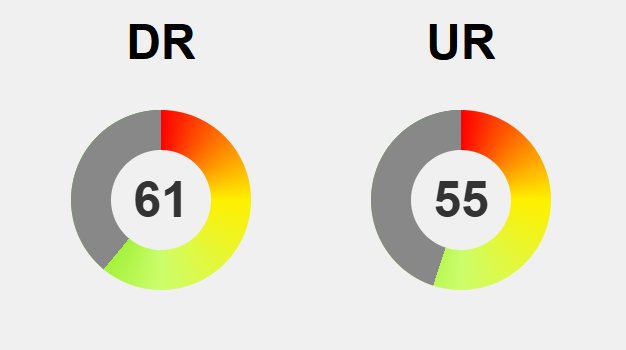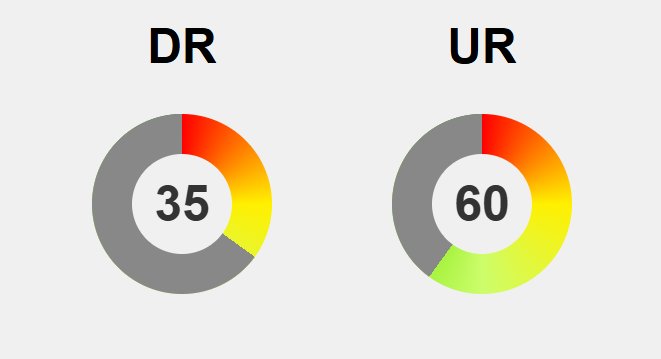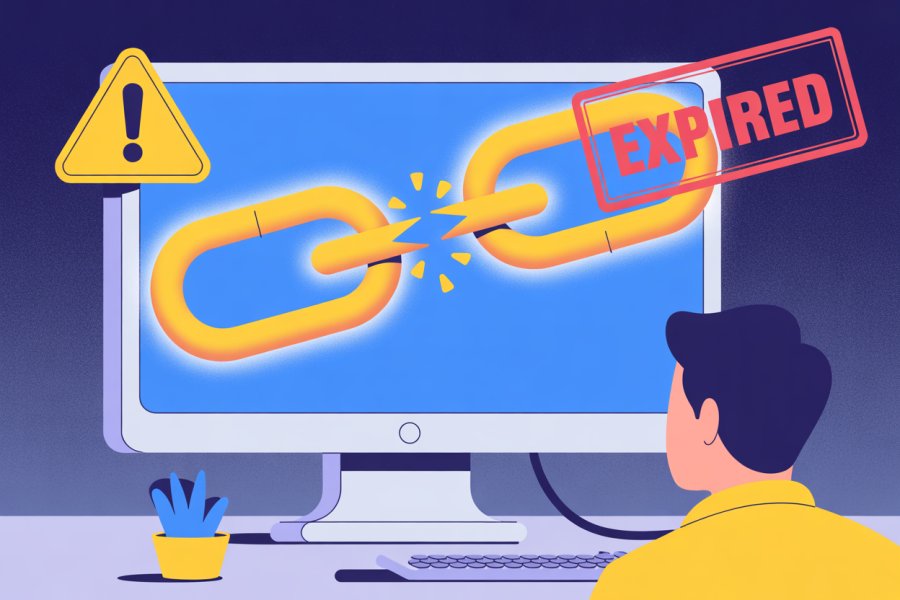
A sudden drop in your website’s Domain Rating (DR) after Ahrefs’ recent algorithm update might cause concern, but it signals more than just a decline—it reflects a shift towards more accurate measurement of genuine authority. This recalibration emphasizes trustworthiness and relevance over sheer backlink volume, urging site owners to focus on high-quality, meaningful links. Could this fluctuation actually be an opportunity? By auditing backlinks, disavowing toxic links, and creating valuable content, you can rebuild and strengthen your profile. The update underscores that authentic influence is built through integrity, not shortcuts, aligning with Google’s emphasis on experience, expertise, authority, and trust. As SEO tools evolve to mirror these standards, long-term success relies on ethical, sustainable strategies. So, instead of panic, should you view this as a wake-up call to refine your approach and develop a resilient, trustworthy online presence that withstands future shifts?

Understanding Domain Rating and the Recent Ahrefs Algorithm Update
When your website’s Domain Rating (DR) suddenly drops, it can be confusing. DR is a key metric used by tools like Ahrefs to estimate your site’s overall authority based on its backlink profile. Think of it as a snapshot that reflects how well your site might perform in search engine rankings. The higher your DR, the more trustworthy and influential your site appears to be, which can help boost visibility in search results.
Recently, Ahrefs announced a significant update to its algorithm that recalibrates how DR scores are calculated. Unlike a penalty, this update aims to improve the accuracy and relevance of the metric. It refines the way trustworthiness, relevance, and link strength are evaluated by analyzing fresh backlink data. The goal is to make these scores better reflect real-world link quality, aligning more closely with how search engines like Google assess authority.
This change isn’t about penalizing websites but about creating a fairer, more accurate picture of online influence. As a result, websites with previously high scores—thanks to a broad backlink profile—might see their ratings adjust, sometimes dropping quite a bit. Conversely, sites with cleaner, higher-quality backlinks could see their DR stabilize or even rise. These fluctuations are a direct result of the new emphasis on trust and relevance over sheer link quantity.
Understanding this update helps clarify why your DR might fluctuate unexpectedly. It’s less about losing backlinks and more about how those links are valued now. Links from reputable, relevant sources carry more weight, while low-quality or irrelevant links are devalued. This shift encourages website owners to focus on earning high-quality backlinks from trustworthy sites, rather than simply increasing their number.
While a sudden DR drop might seem alarming, it’s not necessarily a sign of decline. DR isn’t a direct Google ranking factor; it’s a comparative measure to assess your backlink strength against competitors. Still, a dip can highlight areas where your backlink profile may need attention. Regular audits and a focus on building genuine, high-quality links can help you recover and strengthen your authority over time.
This update reflects a broader industry move toward valuing authentic authority built through meaningful relationships and valuable content. Metrics like DR are tools to guide your strategy, but they’re most effective when supported by real, relevant backlinks. Embracing this shift means prioritizing trust and relevance, aligning your efforts with Google’s E-E-A-T principles. That way, your site’s authority isn’t just a number—it’s a reflection of genuine influence.
How the DR Update Alters Website Metrics Across Industries
The recent DR update by Ahrefs has caused noticeable shifts in website metrics across various industries. Websites that once enjoyed high scores often find their ratings adjusting—sometimes dropping sharply—even if their backlink profiles haven’t changed. These fluctuations aren’t about losing backlinks but are the result of a more nuanced evaluation of link quality and relevance. Sites relying heavily on a large volume of low-quality links may see their scores decrease, as the new algorithm prioritizes trustworthiness and relevance over sheer quantity.
In competitive sectors like finance, technology, and e-commerce, the impact is especially pronounced. Some websites gain higher scores after acquiring backlinks from reputable, industry-leading sources, while others see their ratings dip due to the devaluation of weaker links. This shift emphasizes that old metrics, which focused mainly on backlink quantity, don’t tell the full story anymore. Instead, the emphasis is on the quality and relevance of backlinks, making the scores more reflective of true authority in the eyes of search engines.
Smaller niche sites often feel the impact less strongly. Their backlink profiles tend to consist of highly relevant, high-quality links, so their scores tend to stabilize or improve under the new calibration. This highlights that genuine authority is built through meaningful relationships and valuable content rather than just inflating backlink numbers. As a result, website owners are prompted to revise their link-building strategies to focus on earning trustworthy, relevant links that genuinely enhance their authority.
The industry-wide recalibration also pushes marketers to reassess their SEO priorities. Fluctuations in DR now more accurately mirror real-world link strength and trust. This means that sudden drops aren’t necessarily signs of decline but signals to review and optimize backlink profiles. Regular audits and targeted efforts to disavow toxic or low-quality links become crucial in maintaining a resilient and authoritative online presence.
These changes can be disconcerting, especially when a site’s DR drops without apparent backlink loss. However, understanding that the update reweights backlink quality helps explain these shifts. It encourages a proactive approach—focusing on high-quality link acquisition and content that attracts natural backlinks—rather than reacting emotionally to score fluctuations. Over time, this mindset fosters stronger, more sustainable SEO growth rooted in authenticity.
Overall, the recalibration underscores that building real authority involves more than just accumulating links. It’s about fostering trust through relevance, quality, and meaningful relationships. Recognizing these shifts allows website owners to adapt their strategies effectively, ensuring their backlink profiles remain robust and aligned with modern SEO standards. This evolution ultimately benefits those committed to ethical, long-term growth rather than superficial metrics.

Interpreting DR Fluctuations as Opportunities for SEO Growth
When your Domain Rating suddenly dips, it might seem like a setback, but it can also be a valuable signal for growth. These fluctuations usually stem from changes in your backlink profile—such as the loss of low-quality links or the re-evaluation of existing ones under the new algorithm. Instead of panicking, pause and analyze what’s happened. Conduct a backlink audit to identify which links have disappeared or been devalued. This process reveals weaknesses in your profile and highlights where to focus your efforts to rebuild authority.
Use these insights as a guide to refine your link-building strategy. Prioritize earning high-quality, relevant backlinks from reputable sites within your industry. Creating valuable, shareable content—like in-depth guides, original research, or industry insights—can naturally attract trustworthy links over time. Building relationships with influential websites through guest posting and collaborations further enhances your backlink profile, boosting your credibility and authority.
A decline in DR can also serve as a prompt to monitor your competitors’ backlink profiles. If they gain stronger links from authoritative sources, your relative position might seem weaker—even if your own backlink count remains unchanged. Keeping an eye on industry benchmarks and competitor link growth uncovers new outreach opportunities. Identifying untapped niches or authoritative sites willing to link to your content can give your SEO efforts a fresh boost and help you stay competitive.
Instead of viewing these fluctuations as failures, see them as opportunities to improve. Focus on earning genuine, high-quality links rather than chasing quick wins or superficial metrics. Regular backlink audits help you identify and disavow toxic or low-value links that no longer serve your strategy. Building a resilient profile requires consistent effort—creating compelling content, nurturing relationships, and emphasizing relevance and trust. This long-term approach ensures your site remains strong through future updates and shifts in the landscape.
Aligning your backlink strategy with Google’s E-E-A-T principles—experience, expertise, authority, and trust—can make a significant difference. Authentic relationships and valuable content lay a solid foundation that withstands algorithm changes. When your DR dips, approach it as a chance to reassess and reorient your efforts. By focusing on sustainable, ethical link-building, you reinforce your site’s credibility and position it for long-term success.
These fluctuations highlight that building authority isn’t about short-term tactics but about establishing genuine influence. They reveal what’s working, what needs improvement, and where to direct your resources. Instead of reacting emotionally, use these signals to develop a smarter, more sustainable SEO strategy. Over time, this mindset fosters a resilient, trustworthy online presence rooted in relevance and quality.
In essence, DR drops are less setbacks and more opportunities for growth. They push you to analyze, adapt, and strengthen your backlink ecosystem. Embracing this perspective ensures you’re not just recovering your score but building a more credible and authoritative website—ready to thrive amid ongoing algorithm updates and market shifts.
Understanding the implications of a sudden DR drop can also guide your awareness of industry-wide changes. For more insights on recent updates and how they might affect your site’s authority, you can visit the latest news about the recent sudden DR drop and what it means for SEO strategies.
Practical Strategies to Recover and Strengthen Your SEO Authority
To recover and strengthen your SEO authority amid changing DR scores, start with a thorough backlink audit. Use tools like Ahrefs to identify which links have been lost or devalued, paying close attention to low-quality or spammy backlinks that might be dragging your profile down. Disavowing these harmful links clears the way for a cleaner, more trustworthy backlink ecosystem. From there, focus on earning high-quality, niche-relevant backlinks from reputable sites within your industry. Reach out for guest posting opportunities, collaborations, or partnerships that can naturally generate valuable links and boost your credibility.
Creating content that stands out remains a cornerstone of sustainable SEO growth. Invest in in-depth guides, original research, or industry insights that provide real value and encourage others to reference your work. Promoting this content through outreach and social channels increases its visibility and the likelihood of earning natural backlinks from authoritative sources. Over time, this approach not only helps rebuild your DR but also positions your site as a trusted resource in your niche.
Monitoring your referring domains regularly is essential to maintaining a strong backlink profile. Keep an eye on the authority, relevance, and health of the sites linking to you. If you notice a decline in link quality or authority, act quickly—disavow toxic links and seek out opportunities to gain new, high-quality backlinks. Consistent oversight ensures your profile remains resilient and aligned with your SEO goals, preventing harmful links from dragging your scores down.
Building sustainable SEO practices means shifting focus from quick fixes to long-term value. Avoid shortcuts like buying links or engaging in manipulative schemes. Instead, prioritize earning links through genuine relationships, creating valuable content, and maintaining relevance. Regularly refine your outreach strategies based on backlink audits and industry trends. This disciplined approach helps establish a credible, authoritative presence online, making your site more resistant to future algorithm updates and fluctuations in DR scores.
Finally, adopting an ethical, long-term mindset is key. Patience and persistence are necessary as you develop a high-quality backlink profile rooted in trust and relevance. Consistently producing valuable content and nurturing relationships with industry peers will build a resilient foundation for your SEO efforts. This strategy not only aids in recovering from current DR dips but also positions your site to thrive in an evolving digital landscape driven by quality and authenticity.

Future of SEO: Embracing Authenticity and Evolving Metrics
The recent recalibration of Domain Rating scores by Ahrefs signifies a pivotal shift in how SEO metrics reflect true online authority. Moving away from superficial backlink counts, the industry now emphasizes the importance of trustworthiness and relevance—principles that align closely with Google’s core focus on E-E-A-T: experience, expertise, authority, and trust. This evolution encourages website owners to prioritize genuine, meaningful link-building and high-quality content, fostering sustainable growth rather than chasing quick fixes.
As search engines refine their ability to evaluate authority, tools like Ahrefs, Moz, and SEMrush are evolving to mirror these standards. Their metrics are increasingly designed to reward authenticity and discourage manipulative practices. This means that long-term success in SEO depends more than ever on cultivating real relationships, creating valuable content, and earning backlinks from reputable sources. Building this foundation ensures resilience against future algorithm updates and market shifts.
The future of SEO will likely continue emphasizing quality over quantity, pushing brands to adopt ethical strategies rooted in relevance and trust. Patience and consistency become essential—developing a credible online presence isn’t achieved overnight. Instead, it requires ongoing effort to produce authoritative content, nurture industry relationships, and maintain a clean backlink profile. These actions not only improve metrics like DR but also enhance actual visibility and user trust.
This shift also reveals a critical insight: superficial metrics can be misleading. A sudden drop in DR might seem alarming but often signals a move toward a more accurate reflection of genuine influence. Recognizing this allows site owners to avoid knee-jerk reactions and focus on strengthening their core SEO practices. Regular audits, ethical link-building, and content development become crucial tools in creating a resilient, authoritative digital footprint.
In a landscape that increasingly values authenticity, building a credible backlink ecosystem rooted in relevance and trust will prove more effective than fleeting tactics. By aligning efforts with evolving industry standards, website owners can foster long-term growth that withstands algorithm shifts and market fluctuations. This approach not only improves scores but also delivers real value to audiences, establishing a trustworthy reputation that lasts.
Ultimately, these developments reinforce that SEO success isn’t about gaming metrics but about establishing true influence through ethical practices. Fluctuations in DR or similar scores are opportunities to reassess and refine strategies, not setbacks. Viewing them as signals for improvement helps foster a mindset focused on sustainable, impactful growth.
As the industry continues to evolve, staying informed and adaptable will be key. Embracing transparency, prioritizing high-quality content, and nurturing authentic relationships form the backbone of a future-proof SEO strategy. By doing so, brands can build a resilient digital presence that not only ranks well but also gains lasting trust—ensuring long-term success in an increasingly discerning online landscape.



